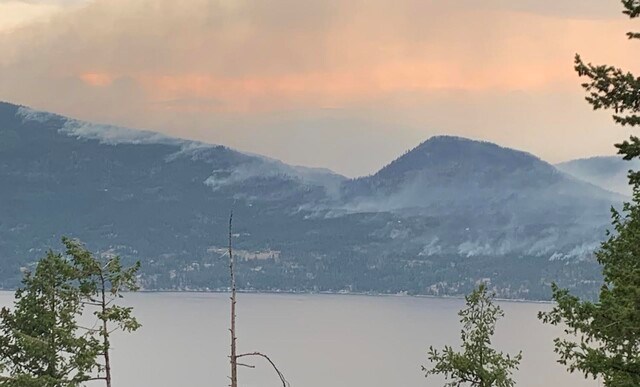UPDATE: 11:24 a.m.
The City of Armstrong has temporarily rescinded the evacuation alert issued on Aug. 6.
The area of the White Rock Lake wildfire saw recent weather cooperation such as, increased precipitation and humidity coupled with reduced temperatures and relaxed winds Saturday morning and is expected to remain so for the remainder of today prompting the change in removing the evacuation alert, the city said in an update.
However, the Township of Spallumcheen will remain on evacuation alert due to the size of the municipality and the challenging remote terrain as well as the number of large agricultural producers located in the Township.
UPDATE: 9:50 a.m.
The southeast flank of the White Rock Lake fire received a small of amount of rain early Sunday morning, and fire growth has largely stalled. But some light winds are forecast in the area again Sunday.
In a Sunday morning update, the BC Wildfire Service says the fire's growth stopped in the Siwash Creek area, above Westside Road, Friday evening, and it's remains stalled there.
“Temperatures today will dip into the mid-teens with light northwest winds,” the BCWS said. “Into next week, a flat upper ridge will begin to build on Monday bringing warm and dry conditions back to the region.”
While some areas of the Okanagan were hit with significant rain overnight, less than five mm fell over the fire area. But the BCWS says the rains will provide “a slight reprieve.”
Hundreds of homes remain evacuated along Westside Road, as far south as La Casa resort. Additionally, all of the Okanagan Indian Band's I.R. #1 remains evacuated. Westside Road remains closed.
The City of Vernon rescinded the bulk of its evacuation alert Saturday afternoon.
“Aerial resources primary focus over the next 48 hours will be to continue to reduce the rate of spread along the active flanks, as well as ensure the safety of ground personnel,” the BCWS said.
“Thirteen helicopters are assigned to the White Rock Lake wildfire and will be delivering water to problematic areas of the fire to support ground suppression efforts.”
The BCWS says if conditions remain favourable, small-scale ignition operations will be conducted to support the building of containment lines on the fire's southern flank.
“Heavy machinery will continue to work along Mowing Machine Forest Service Road to reinforce the road,” the BCWS said.
“Heavy machinery will be working on the construction of a control line from Beautiful Road heading east. This control line with serve as a contingency line south of the fire perimeter and will be established using a combination of Forest Service Roads, lakes, and pre-existing machine guards.”
The massive fire remains estimated at 55,000 hectares.
ORIGINAL: 7 a.m.
While the rain falling in the Okanagan Sunday morning is a welcome sight for most residents, it's particularly good news for firefighters working the White Rock Lake fire – and for the hundreds of residents who remain evacuated.
The massive fire grew substantially on its southeastern flank Friday night, coming within 100 metres of the west side of Okanagan Lake in some areas. Strong winds whipped through the fire, causing aggressive Rank 5 behaviour.
Hundreds more properties were evacuated along Westside Road and on Okanagan Indian Band land Friday night, while most of the entire City of Vernon was placed under an evacuation alert, as large burning embers from the fire fell across the city.
But temperatures cooled through early Saturday morning and a moderate amount of rain fell over the fire , bringing some reprieve to those fighting the large blaze. The Regional District of Central Okanagan, Regional District of North Okanagan and the Okanagan Indian Band all said they'd received no confirmed reports of any homes lost to the fire Friday night.
Fire behaviour slowed enough Saturday that the Regional District of Central Okanagan allowed some evacuees on Westside Road to briefly return home to grab any belongings they had initially forgotten, and by Saturday afternoon, the City of Vernon had rescinded the bulk of its evacuation alert.
Water skimmers were picking up water from Okanagan Lake and hitting the fire Saturday afternoon, and more air support is expected on the fire Sunday.
And while the northeastern flank of the fire saw significant growth last week, causing large-scale destruction in the Monte Lake area, the north side of the fire has seen minimal growth in the last 48 hours.
Sunday morning's rain has no doubt further helped fire suppression efforts, but it's unclear at this time just how much rain has fallen over the fire. Radar shows the bulk of the storm has largely been over Vernon, Kelowna and Penticton, with less rain to the west of Okanagan Lake.
Saturday afternoon, Vernon Fire Chief David Lind noted the 55,000-hectare fire is far from out.
The weather is forecast to shift once more Monday, with conditions drying out and temperatures rising into the 30s.



